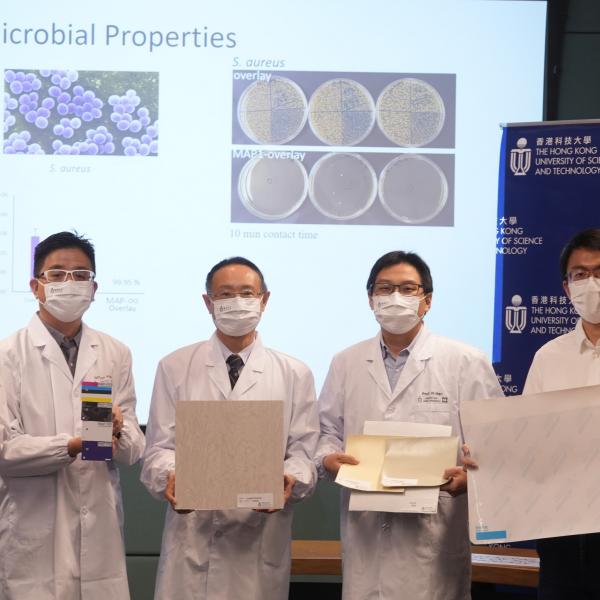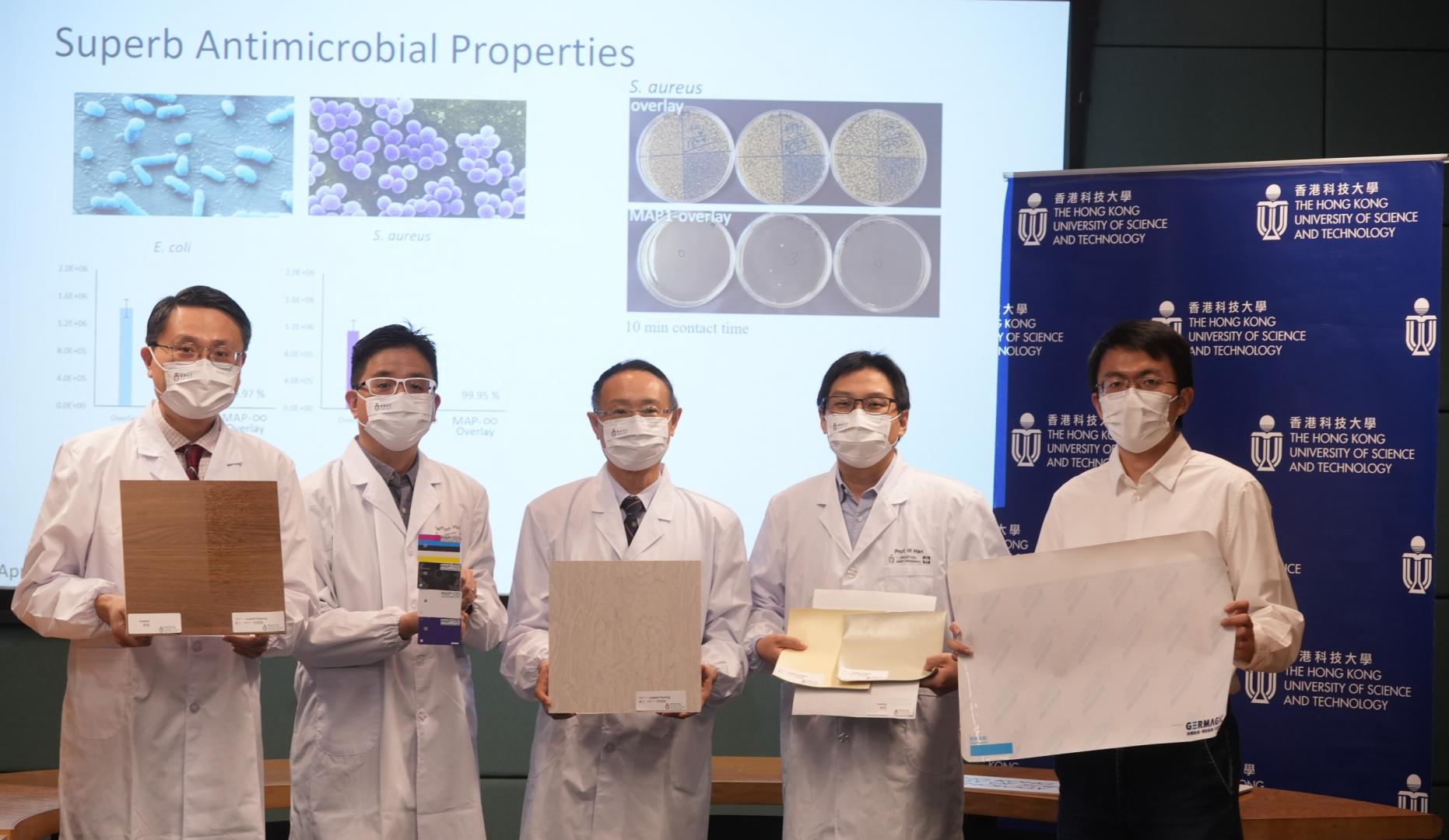HKUST Develops New Smart Anti-Microbial Coating With Long Term Protection Against Omicron
Researchers at The Hong Kong University of Science and Technology (HKUST) have developed a new multi-level anti-microbial polymer coating effective in killing a wide range of bacteria, hard-to-kill spores, as well as inactivating[1] 99.9 per cent of highly-infectious viruses – including the Omicron variant which has caused a tsunami of Covid-19 cases around the globe in recent months.
Having been tested in field trials and laboratories both at HKUST and independently in France and the UK for its efficacy and durability, this new MAP-∞ is proven to last at least five years on a variety of materials and surfaces, based on accelerated ageing tests conducted in compliance with relevant standards for disinfection, disinfectant, medical devices and cards published by the Mainland Chinese and Australian authorities, American Society for Testing and Materials and the International Organization for Standardization. Materials coated with MAP-∞ is similarly effective against SARS-CoV-2 and its Omicron strain[2].
Invented by a team led by Prof. YEUNG King-Lun, Professor at the Department of Chemical and Biological Engineering and the Division of Environment and Sustainability at HKUST, MAP-∞ is an upgraded version of MAP-1, one of the first lasting anti-microbial coatings co-developed and commercialized with the Chiaphua Industries Limited (CIL) against the coronavirus at the onslaught of the Covid-19 pandemic in early 2020. The original coating, initially effective for up to three months and eventually six months after each application, was quickly adopted by a wide range of facilities including hospitals, clinics, care homes, schools, public transports, shopping malls, restaurants, public venue in Hong Kong and abroad. It was also applied to the sportswear and gear of the Hong Kong Olympic athletes during the Tokyo 2020 Olympic Games.
Dr. David CHUNG, Under Secretary for Innovation and Technology, said in a media briefing session of the coating, “All along, we have been promoting the cooperation among the government, industry, academia and research institutes. The new smart anti-microbial coating developed by the HKUST best illustrates the synergy created by the collaboration of universities and private sectors and helps accelerate commercialization of R&D achievements. My heartfelt thanks to the HKUST and the Chiaphua Industries Limited in their support and contributions to the I&T development in Hong Kong. I would also like to encourage everyone to work together and inject more new impetus to the Hong Kong I&T industry.”
Prof. Yeung said, “We developed a new formula for this long-lasting coating, as we realized that whether we like it or not, the world would have to find a more sustainable way to deal with the SARS-Cov-2 virus. Just like disinfection of tap water, anti-microbial function will certainly become a ubiquitous feature of future consumer products. The invention of MAP-∞ is meant to help meet this new demand and to better protect the general public.”
The coating works by contact-killing and prevents surface contamination with its anti-adhesion and self-cleaning properties. Similar to MAP-1, the new version is also proven non-toxic to the animals and environment according to the Technical Standard for Disinfection issued by the National Health Commission in Mainland China. It is available as high gloss permanent surface finish, high optical-transparent finish, and ultra-durable protective coating for a wide range of applications.
CIL, which has established a joint laboratory with the HKUST on environmental health technologies in 2018, is now in discussion with different industrial partners on applying MAP-∞ on public buses, elevators, elderly care homes, optical lenses, credit cards and passenger aircrafts. The coating can also be applied to frequently-touched objects such as doorknobs, smart phone screens, remote controllers, handbags, or building materials such as artificial marble and wallpaper, without changing their texture and appearance. Since the establishment of the joint lab, the Innovation and Technology Commission has offered staunch support to the lab’s research and application, awarding funding totalling close to HK$4 million.
[1] Inactivating a virus literally means killing it, but it’s more proper to use the word ‘inactivate’ as virus is not considered alive. Viruses only replicate and propagate when they find a host.
[2] SARS-CoV-2 hCoV19/USA/MD-HP20874/2021 B.1.1.529 (P1 in V/T/A – Omicron)




